- Home
- Stephen Baxter
Space m-2 Page 10
Space m-2 Read online
Page 10
Malenfant calculated.
He hadn’t expected a reception committee. This was just a workaday gateway, a portal for unmanned robot worker drones. Maybe the Gaijin themselves were off in the warmth of that complex, crowded inner system.
He reckoned he had around five hours life support left. If he went back — assuming the portal was two-way — he might even make it back to the Perry.
Or he could stay here.
It would be one hell of a message to send on first contact, though, when the inhabitants of the Centauri system came out to see what was going on, and found nothing but his desiccated corpse.
But you’ve come a long way for this, Malenfant. And if you stay, dead or alive, they’ll sure know we are here.
He grinned. Whatever happened, he had achieved his goal. Not a bad deal for an old bastard.
He worked his left hand controller; with a gentle shove, the MMU thrust him forward, toward the drone.
He took his time. He had five hours to reach the drone. And he needed to keep some fuel for maneuvering at the close, if he was still conscious to do it.
But the drone kept working its complex limbs, pursuing its incomprehensible tasks. It made no effort to come out to meet him.
And, as it turned out, his consumables ran out a lot more quickly than he had anticipated.
By the time he reached the drone, his oxygen alarm was chiming, softly, continually, inside his helmet. He stayed conscious long enough to reach out a gloved hand and stroke the drone’s metallic hide.
When he woke again, it was as if from a deep and dreamless sleep.
The first thing he was aware of was an arm laid over his face. It was his own, of course. It must have wriggled free of the loose restraints around his sleeping bag.
Except that his hand was contained in a heavy space suit glove, which was not the way he was accustomed to sleeping.
And his sleeping bag was light-years away.
He snapped fully awake. He was floating in golden light. He was rotating, slowly.
He was still in his EMU — but, Christ, his helmet was gone, the suit compromised. For a couple of seconds he fumbled, flailing, and his heart hammered.
He forced himself to relax. You’re still breathing, Malenfant. Wherever you are, there is air here. If it’s going to poison you, it would have done it already.
He exhaled, then took a deep lungful — filtered through his nose, with his mouth clamped closed. The air was neutral temperature, transparent. He could smell nothing but a faint sourness, and that probably emanated from himself, the cramped confines of a suit he’d worn for too long.
He was stranded in golden light, beyond which he could make out the stars, slightly dimmed, as if by smoke. There was the dazzling bright pairing of Alpha Centauri. He hadn’t come far, then.
Were there walls around him? He could see no edges, no seams, no corners. He stretched out his feet and gloved fingers. His questing fingers hit a soft membrane. Suddenly the wall snapped into focus, just centimeters from his face: a smooth surface, overlaid by what felt like cables the width of his thumb, but welded somehow to the wall. The cables were a little hard to grip, but he clamped his fingers around them.
Anchored, he felt a lot more comfortable.
The wall itself was soft, neither warm nor cold, smooth beyond the discrimination of his touch. It curved tightly around him. Perhaps he was in some kind of inflated bubble; it could be no more than a few meters across. And it wasn’t inflated to maximum tension. When he pushed at the wall it rippled in great languid waves, pulses of golden light that briefly occluded the stars.
He picked at the membrane with one finger. It felt like some kind of plastic. He had no reason to believe it was anything more advanced; the Gaijin had not shown themselves to be technological superbeings. He could have easily taken a scraping of this stuff, analyzed it with a small portable lab. Except he didn’t have a portable lab.
Something bumped against his leg. “Shit,” he said. He whirled, scrabbling at the embedded ropes, until he was backed up against the wall.
It was the helmet from his shuttle EMU.
He picked it up and turned it over in his gloved hands. The helmet had a snap-on metal ring, to fit it to the rest of the suit — or rather, it used to. The attachment had been cut, as if by a laser.
The Gaijin — or their robot drones, here on the edge of the Alpha system — had found him in a shell of gases: air that roughly matched what they must have known, from some equivalent of spectrograph studies, of the composition of Earth’s atmosphere. So they had provided more of the gases in this containment, and broken open his suit — and then, presumably, hoped for the best.
He took off his gloves. He found he was still wearing his lightweight comms headset. He pulled it off and tucked it inside the helmet. There was no sign of his maneuvering unit.
…And now a kind of aftershock cut in. He rested against the slowly rippling wall, lit up by gold-filtered Centauri light, four light years from home. The robots had been smart, he realized with a shiver. After all, the robots, if not the Gaijin themselves, shared nothing like human anatomy. What if they’d decided to see if his whole head was detachable? He felt very old, fragile, and unexpectedly lonely — as he hadn’t during the long months of his Perry flight to the Saddle Point.
What now?
First things first. You need a bio break, Malenfant.
He forced himself to take a leak into the condom he still wore. He felt the warm piss gather in the sac inside his suit. Piss that had been magically transported across four light-years. He probably ought to bottle it; if he ever got back home he could probably sell it, a memento of man’s first journey to the stars.
There was movement, a wash of light beyond the bubble wall. Something immense, bright, cruising by silently.
He swiveled, still pinching hold of the embedded ropes, until he faced outward. He pressed his face against the bubble wall, much as he used to as a kid, staring out of his bedroom window, hoping for snow.
The moving light was a flower-ship.
The Gaijin craft sailed across the darkness, heading for the warm glow at the heart of the Centauri system. The cables and filaments that shaped the maw of its electromagnetic scoops were half furled, and they waved with slow grace as the ship slowly swiveled on its long axis, perhaps intent on some complex course correction. Dodecahedral shapes swarmed over its flanks, reduced by distance to toylike specks, fast-moving, intent, purposeful. They almost looked as if they were rebuilding the ship as it traveled — as perhaps they were; Malenfant imagined a flexible geometry, a ship that could adjust its form to the competing needs of the cold stillness here at the rim of this binary system, and the crowded warmth at its heart.
But still, despite its strangeness, he felt a tug at his heart as the flower-ship receded. Don’t leave me here, drifting in space…
But he wasn’t adrift, he saw now. There were ropes embedded in the outer surface of his shell, ropes that gathered in a loosely plaited tether, as if this bubble of air had been trapped by a spiderweb. The tether, loosely coiled, led across space — not to the flower-ship, but to something hidden by the curve of the bubble.
He pushed himself across the interior of the bubble to look out the other side.
In the dim light of the distant Alpha Suns, he could see only an outline: a rough ball that must have been kilometers across, the glimmer of what looked like frost from crater dimples and low mountains.
From one space suit pocket he dug out a fold-up softscreen, then unpacked it, and plastered it against the wall of the bubble. This screen had been designed as a low-light and telescopic viewer. Soon its enhancement routines were cutting in, and it became a window through which he peered, angling his head to change his view.
The object seemed to be a ball of ice. It might have been an asteroid, but he was a long way from those double Suns. This was more likely the Alpha equivalent of a Kuiper object, an ice moon — or maybe he was even in this system’s Oo
rt cloud, and this was the head of some long-period comet.
And now he made out movement on that icy surface: continual, complex, almost rippling. He tapped at the softscreen, instructing it to magnify and enhance some more.
He saw drone robots swarming everywhere, their complex limbs working like cockroach legs. The drones moved back and forth in files and streams, endless traffic. Here and there in the flow there were islands of stillness, nodes where the swirl gathered in knots and eddies. And in a few places he saw the gleam of silvery blankets, perhaps like the nano-blankets Frank Paulis’s probe had found on that belt asteroid back home. Maybe they were making more flower-ships. Or perhaps these were von Neumann machines, he thought, replicators engaged primarily in making more copies of themselves, and they would continue until every gram of this remote ball of ice and rock had been converted into purposeful machinery.
But everywhere he looked, as he scanned his screen, he could see endless, purposeful movement — perhaps millions of drones, the toiling community making up a glinting, robotic sea. His overwhelming impression was of cooperation — of blind, unquestioning, smoothly efficient obedience to a higher communal goal. These robots had more in common with hive insects, he thought — ants or termites — than with humans.
But perhaps I should have expected this, he thought. Humans were competitive. But there was no reason to suppose that everybody else had to be that way. Maybe a competitive technological community could only reach a certain point before it became unstable and destroyed itself. Arms races could only take you so far. Perhaps only the cooperative could survive. In which case, he thought, what we are going to find as we move farther out is, inevitably, more of this. Termite colonies. And, perhaps, nobody like us.
Damn, he thought. I might be the only true individual in this whole star system. What a bleak and terrifying notion.
But if the robots were replicators they weren’t very good ones.
They all seemed to be based on the design of the type he had first met, with that chunky dodecahedral body, limbs sprouting in a variety of configurations, apparently specialized. But otherwise these toiling drones appeared somewhat diverse. The differences weren’t great: a few extra limbs here, a touch of asymmetry there, each dodecahedron slightly diverging from the geometric ideal — but they were there.
Perhaps the authentic von Neumann vision — of identical replicators spawning each other — was impossible without true nanotech, a command of materials and manufacturing right down to the atomic level. He imagined a fleet of these limited, imperfect robots being unleashed on the Galaxy, ordered to travel from star to star, to build others of their kind — and, with each generation, getting it subtly wrong.
But for there to be such a wide variety of “mutations” as he saw here, there surely had to have been an awful lot of generations.
Or, he thought, what if these are the Gaijin?
He had been assuming that behind these “mere” machines there had to be something bigger, something smarter, something more complex. Lack of imagination, Malenfant. Anthropomorphic. Deal with what you see, not what you imagine might be waiting for you.
He tired of watching the incomprehensible swarming of the robots, and he turned his enhancement softscreen on Alpha Centauri.
Each of the near twins looked hauntingly like the Sun — but if the brighter star, Alpha A, were set in place of the Sun, its companion, Alpha B, would be within the Solar System: closer than planet Neptune, in fact.
And there were planets here. The interpretative software built into his softscreen began to trace out orbits — one, two, three of them, tight around bright Alpha A — of small rocky worlds, perhaps twins of Earth or Venus or Mars. A couple of minutes later, similar orbits had been sketched out around the companion, B.
Alpha Centauri wasn’t just a twin star; it was a twin stellar system. If Earth had been transplanted here, the second Sun would be a brilliant star. There would be double sunrises, double sunsets, strange eclipses of one star by the other; the sky would be a bright and complex place. And there would have been a whole other planetary system a few light-hours away: so close humans would have been able to complete interstellar journeys maybe as early as the 1970s. He felt an odd ache of possibilities lost, nostalgia for a reality that had never come to be.
The double system contained only one gas giant — and that was small compared to mighty Jupiter, or even Saturn. It was looping, it seemed, on a strange metastable orbit that caused it to fly, on decades-long trajectories, back and forth between the two stars. And as the stars followed their own elliptical orbits around each other, it seemed highly likely that within a few million years the rogue planet would be flung out into the dark, from whence, perhaps, it had come.
If there were few giants, the Alpha sky was full of minor planets, asteroids, comet nuclei. Unlike the orderly lanes of Earth, these asteroid clouds extended right across the space between the stars, and into the surrounding volume. As the screen’s software began to plot density contours within the glittering asteroid clouds, Malenfant made out knots, bands, figure-eight loops, and even what looked like spokes radiating from each star’s central system: clouds of density marked out by the sweeping paths of flocks of asteroids, shepherded by the competing pulls of the stars and their retinues of planets. From an Earth orbiting Alpha A or B, there would be a line across the sky, marking out the plane of the eliptic: dazzling, alluring, the sparkle of trillions of asteroids, the promise of unimaginable wealth.
The pattern seemed clear. The mutual influence of A and B had prevented the formation of giant planets. All the volatile material that had been absorbed into Sol’s great gas giants had here been left unconsolidated. Malenfant, who had spent half his life arguing for the mining of space resources, felt his fingers itch as he looked at those immense clouds of floating treasures. Here it would have been easy, he thought with some bitterness.
But this was not a place for humanity, and perhaps it never would be. For now the software posted tiny blue flags, all around the rim of the system. These were points of gravitational-lensing focus, Saddle Points, far more of them than in Sol’s simple unipolar gravity field. And there was movement within those dusty lanes of light: bright yellow sparks, Gaijin flower-ships, everywhere.
The Solar System is impoverished by comparison, he thought. This is where the action is in this part of space: Alpha Centauri, riddled with so many Saddle Points it’s like Grand Central Station, and with a sky full of flying mines to boot. He felt humbled, embarrassed, like a country cousin come to the big city.
There was a blur of motion, washing across his magnified vision.
He rocked back, peering out of his bubble with naked eyes.
It was a robot skittering this way and that on its attitude thrusters, crystals of reaction gas sparkling in Alpha light. It came to rest and hovered, limbs splayed, no more than ten meters from the bubble.
Malenfant pushed himself to the wall nearest the robot, pressed his face against the membrane, and stared back.
Its attitude suggested watchfulness. But he was probably anthropomorphizing again.
That dodecahedral core, fat and compact, must have been a couple of meters across. It glistened with panels of complex texture, and there were apertures in the silvery skin within which more machinery gleamed, unrecognizable. The robot had various appendages. A whole forest of them no more than centimeters long bristled from every surface of the core, wiry, almost like a layer of fur. But two of the limbs were longer — ten meters each, perhaps — and were articulated like the robot arms carried by the old space shuttle, each ending in a knot of machinery. He noticed small attitude thruster nozzles spread along the arms. The whole thing reminded him of one of the old space probes — Voyager, perhaps, or Pioneer — that dense solid core, the flimsy booms, a spacecraft built like a dragonfly.
The robot showed signs of wear and age: crumpled panels on the dodecahedral core; an antennalike protrusion that was pitted and scarred, as if by microme
teorite rain; one arm that appeared to have been broken and patched by a sheath of newer material. This is an old machine, he thought, and it might have been traveling a long, long time; he wondered how many Suns had baked its fragile skin, how many dusty comet trail clouds had worn away at those filmy structures.
Right now the two arms were held upward, as if in an air of supplication, giving the robot an overall W shape — like the first robot he’d seen.
Could this be the same machine? Or, he wondered, am I anthropomorphizing again, longing for individuality where none exists? After all, this thing could never be mistaken for something alive — could it? If nothing else its lack of symmetry — one arm was a good two meters longer than the others — was, on some profound level, deeply disturbing.
He gave in to his sentimentality.
“Cassiopeia,” he said. “That’s what I’ll call you.”
Female, Malenfant? But the thing did have a certain delicacy and grace. Cassiopeia, then. He raised a hand and waved.
He half expected a wave back from those complex robot arms, but they did not move.
…But now there was a change. An object that looked for all the world like a telephoto lens came pushing out of an aperture in the front of Cassiopeia’s dodecahedral torso and trained on him.
He wondered if Cassiopeia had just manufactured the system, in response to its — her — perceived need, in some nano factory in her interior. More likely the technology was simpler, and this “camera” had been assembled from a stock of parts carried within. Maybe Cassiopeia was like a Swiss Army knife, he thought: not infinitely flexible, but with a stock of tools that could be deployed and adapted to a variety of purposes.
And then, once again, he was startled — this time by a noise from within his bubble.
It was a radio screech. It had come from the comms headset tucked inside his helmet.
He grabbed the helmet, pulled out the headset, and held one speaker against his ear. The screech was so loud it was painful, and though he thought he detected traces of structure in the signal, there was nothing resembling human speech.

 The Martian in the Wood
The Martian in the Wood THE H-BOMB GIRL
THE H-BOMB GIRL World Engine
World Engine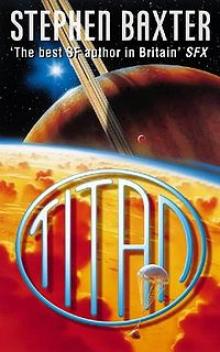 Titan n-2
Titan n-2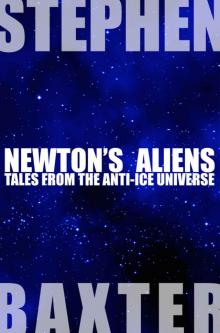 Newton's Aliens: Tales From the Anti-Ice Universe
Newton's Aliens: Tales From the Anti-Ice Universe Exultant
Exultant Manifold: Origin
Manifold: Origin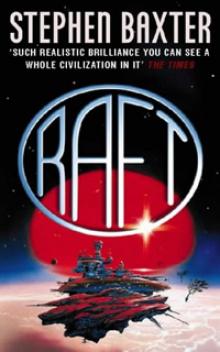 Raft xs-1
Raft xs-1 Bronze Summer n-2
Bronze Summer n-2 Transcendent
Transcendent Stone Spring
Stone Spring Coalescent
Coalescent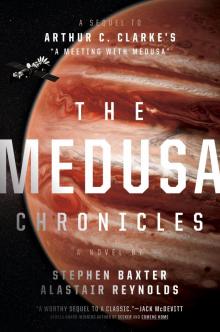 The Medusa Chronicles
The Medusa Chronicles Origin m-3
Origin m-3 Silverhair tm-1
Silverhair tm-1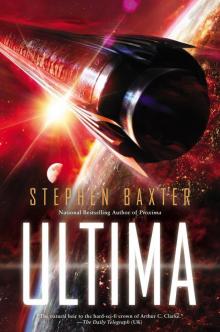 Ultima
Ultima Voyage n-1
Voyage n-1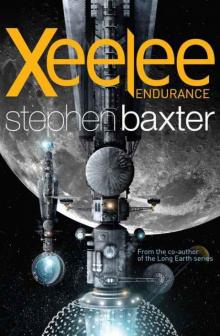 Xeelee: Endurance
Xeelee: Endurance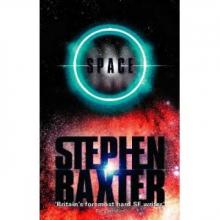 Space m-2
Space m-2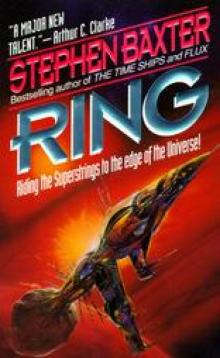 Ring xs-4
Ring xs-4 Raft
Raft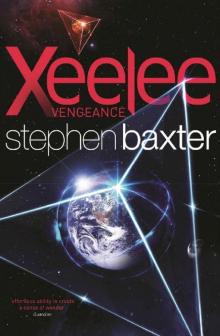 Xeelee: Vengeance
Xeelee: Vengeance Iron Winter n-3
Iron Winter n-3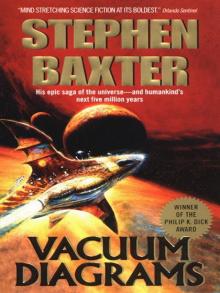 Vacuum Diagrams
Vacuum Diagrams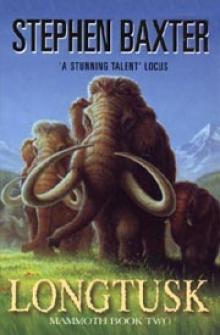 Longtusk tm-2
Longtusk tm-2 Proxima
Proxima Evolution
Evolution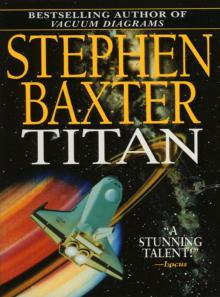 Titan
Titan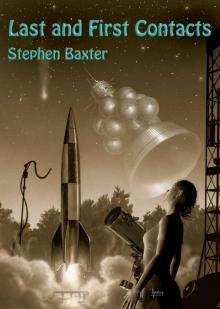 Last and First Contacts (Imaginings)
Last and First Contacts (Imaginings) Emperor
Emperor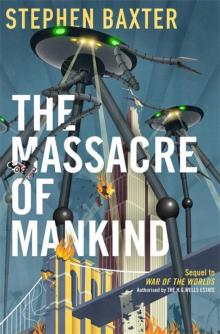 The Massacre of Mankind
The Massacre of Mankind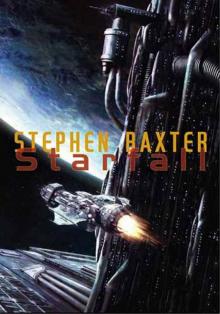 Starfall
Starfall Doctor Who - The Wheel of Ice
Doctor Who - The Wheel of Ice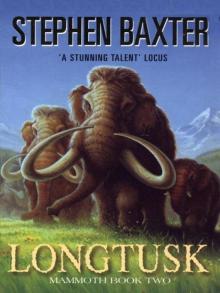 Longtusk
Longtusk Silverhair
Silverhair Conqueror tt-2
Conqueror tt-2 Flood
Flood Flood f-1
Flood f-1 Emperor tt-1
Emperor tt-1 Moonseed
Moonseed Conqueror
Conqueror Timelike Infinity xs-2
Timelike Infinity xs-2 The Ghost Pit
The Ghost Pit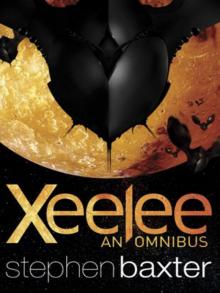 Xeelee: An Omnibus: Raft, Timelike Infinity, Flux, Ring
Xeelee: An Omnibus: Raft, Timelike Infinity, Flux, Ring Weaver tt-4
Weaver tt-4 Landfall: Tales From the Flood/Ark Universe
Landfall: Tales From the Flood/Ark Universe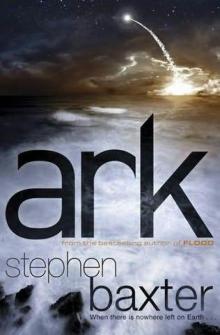 Ark
Ark Emperor: Time’s Tapestry Book One
Emperor: Time’s Tapestry Book One Space
Space Icebones
Icebones Manifold: Space
Manifold: Space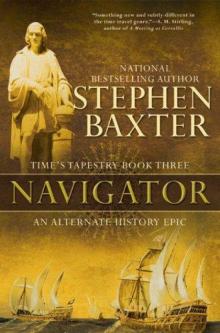 Navigator
Navigator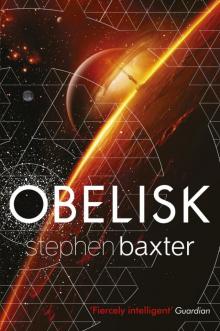 Obelisk
Obelisk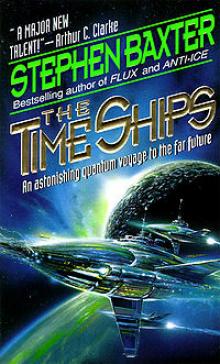 The Time Ships
The Time Ships Bronze Summer
Bronze Summer Resplendent
Resplendent Moonseed n-3
Moonseed n-3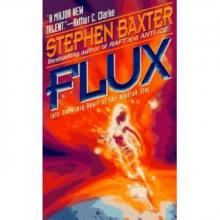 Flux xs-3
Flux xs-3 Transcendent dc-3
Transcendent dc-3 Icebones tm-3
Icebones tm-3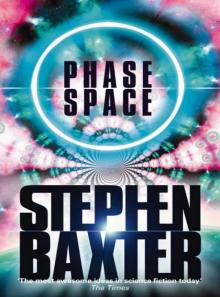 Phase Space
Phase Space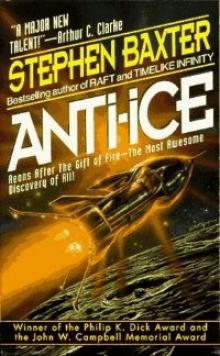 Anti-Ice
Anti-Ice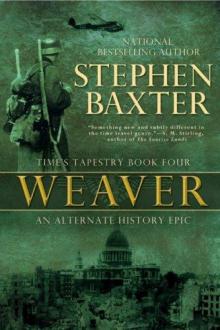 Weaver
Weaver Voyage
Voyage Time m-1
Time m-1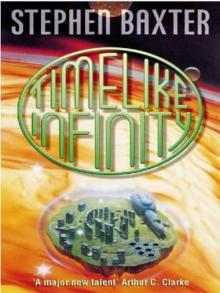 Timelike Infinity
Timelike Infinity Exultant dc-2
Exultant dc-2 Coalescent dc-1
Coalescent dc-1 Navigator tt-3
Navigator tt-3